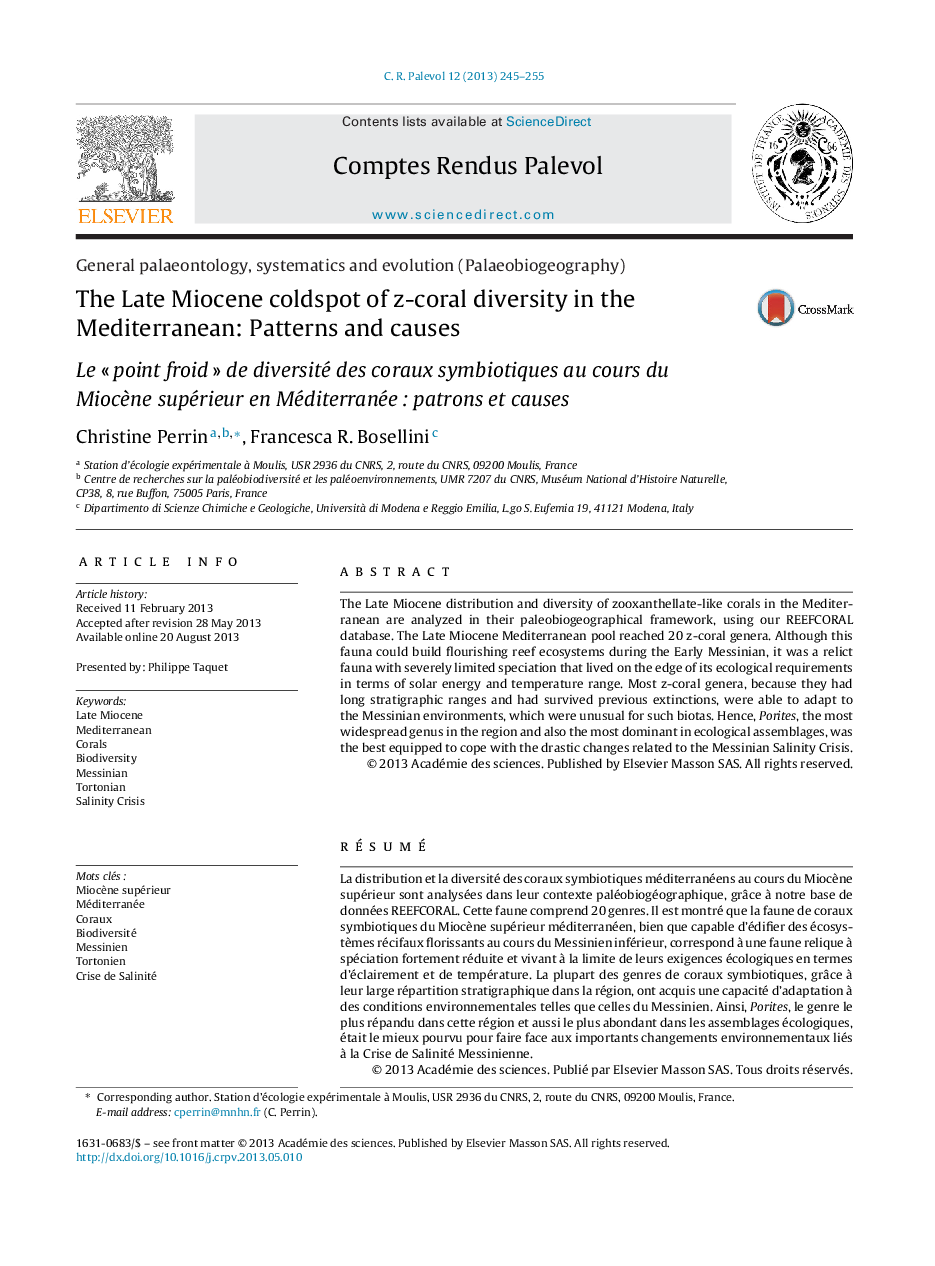| کد مقاله | کد نشریه | سال انتشار | مقاله انگلیسی | نسخه تمام متن |
|---|---|---|---|---|
| 4745988 | 1359798 | 2013 | 11 صفحه PDF | دانلود رایگان |
The Late Miocene distribution and diversity of zooxanthellate-like corals in the Mediterranean are analyzed in their paleobiogeographical framework, using our REEFCORAL database. The Late Miocene Mediterranean pool reached 20 z-coral genera. Although this fauna could build flourishing reef ecosystems during the Early Messinian, it was a relict fauna with severely limited speciation that lived on the edge of its ecological requirements in terms of solar energy and temperature range. Most z-coral genera, because they had long stratigraphic ranges and had survived previous extinctions, were able to adapt to the Messinian environments, which were unusual for such biotas. Hence, Porites, the most widespread genus in the region and also the most dominant in ecological assemblages, was the best equipped to cope with the drastic changes related to the Messinian Salinity Crisis.
RésuméLa distribution et la diversité des coraux symbiotiques méditerranéens au cours du Miocène supérieur sont analysées dans leur contexte paléobiogéographique, grâce à notre base de données REEFCORAL. Cette faune comprend 20 genres. Il est montré que la faune de coraux symbiotiques du Miocène supérieur méditerranéen, bien que capable d’édifier des écosystèmes récifaux florissants au cours du Messinien inférieur, correspond à une faune relique à spéciation fortement réduite et vivant à la limite de leurs exigences écologiques en termes d’éclairement et de température. La plupart des genres de coraux symbiotiques, grâce à leur large répartition stratigraphique dans la région, ont acquis une capacité d’adaptation à des conditions environnementales telles que celles du Messinien. Ainsi, Porites, le genre le plus répandu dans cette région et aussi le plus abondant dans les assemblages écologiques, était le mieux pourvu pour faire face aux importants changements environnementaux liés à la Crise de Salinité Messinienne.
Journal: Comptes Rendus Palevol - Volume 12, Issue 5, June–July 2013, Pages 245–255
